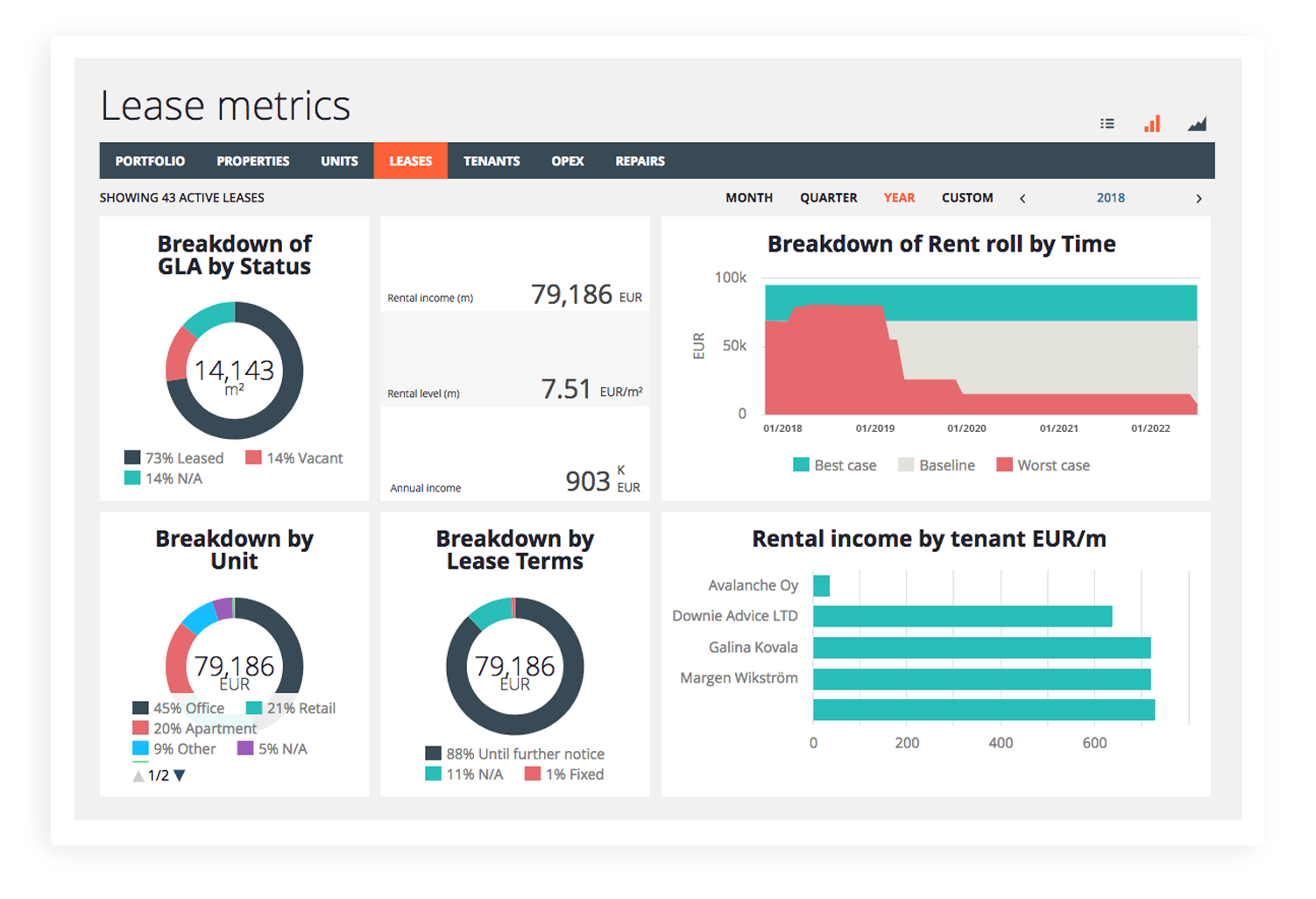Why are rent rolls so important?
The rent roll is an all-purpose document that can be used by buyers, sellers, property managers, real estate investors, landlords, and lenders. But there’s a lot more to it than first meets the eye.
While many real estate practitioners may focus on the PnL and balance sheet, the rent roll for a rental property can provide a surprising amount of details.
Who uses it and for which purpose?
A rent roll provides landlords with a quick overview of their tenant base and related income. It’s also an important document used in commercial real estate transactions since many investors and banks request the rent roll as part of their due diligence process.
The rent roll can also provide an early warning sign to property managers and owners that a problem may be arising with the tenant. The property or unit could then be pre-marketed for lease early enough to reduce the amount of downtime due to vacancy and repairs.
A quick look at the rent roll will tell a buyer and seller whether the property has been generating stable gross rental income. Comparing the fair market rent to the current amount the tenant is paying allows for the possibility to increase the value of the asset simply by raising the payments.
When purchasing a property, a lender wants to see a proper rent roll in your loan application. Landlords also use a rent roll document to do market research by comparing the average rent on their units with those currently on the market. If their rents are lower, they can list those with expiring leases at the higher market rates and boost their income.
Real estate investors use a rent roll to verify the current rental income, search for upside potential in the rental property, and to anticipate problems with future cash flow. A prospective buyer might notice that the majority of the leases on a rent roll report are at above-market rates and expire in the next couple of months, suggesting that rental income could decline significantly after acquiring the rental property.
How to get the best out of you rent roll data?
Measure, analyze, forecast, and react
Assetti can help you to measure and forecast your rental income easily. You can view and sort your properties by name, area, end date, monthly rent, or rental level (monthly or annual rent/m2 or square footage – yes, Assetti confirms to different conventions!). Additionally, we offer filtering and tag search. That means you can use tags for searching a specific kind of lease or rent-roll. With the help of filters, you can view leases by the lease ending time, status, tenant type, unit type, lease term and property type. Sliding filters can also classify the data by the leased area, monthly rent, or the notice period. All of this allows you to only view the data that you need for your current evaluation.
Analyze vacancies and occupancy
For investors, vacancy is usually a dreaded word. You want to focus on minimizing vacancy and getting occupancy as high as possible so that the properties generate the maximum income. With our visualized KPIs, you can easily see, in real-time, which properties have a high or low occupancy or vacancy rate.

Control rent rolls with lease notifications
When managing rent rolls in Assetti, the special status of a lease is expressed in colour-coded stamps. These include a pre-lease agreement, pending lease which has not yet started or a finished for a lease that has already ended. You can also activate unique alerts to remind you of expiring leases.
React to changes and increase potential
Whatever action you decide for your customers or tenants, we can help you to make the influence on your cashflow visible. For example, you can model an alternative budget for the year, based on the changed situation. It gives you answers to the burning questions asset managers, investors, landlords, and banks have: How will the rent discounts or suspended payments affect the finances of the real estate investments?
But you are also able to make a demographic-specific analysis and see, with a couple of steps, who are your tenants and what is the overall risk in terms of leased area, rental income, or geographical risks. Understanding your risk exposure will help you to capture the “big picture” situation with Asseti’s KPIs.

Rent roll analysis and KPIs
With Assetti, you can analyse your data for a specified period; one month, a quarter, a year or a customized amount of time.
We offer three separate views of our KPIs. You can see your data as a list, as a trend chart or as a dashboard.
When it comes to getting the most out of your rent roll data, Assetti doesn’t just help you to understand your data. We also automate and visualize many of the necessary, daily metrics related to property asset management.







